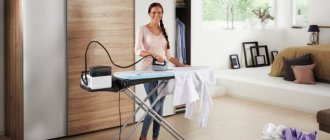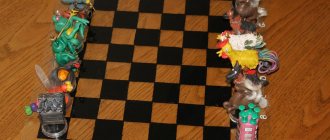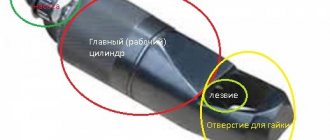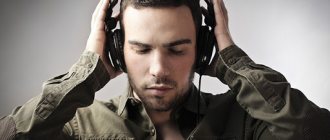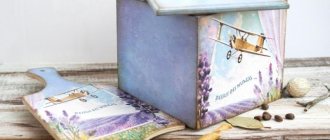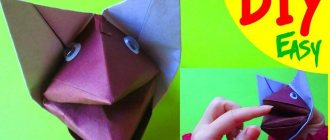DIY balance board: detailed instructions. Important subtleties
A balance board (undo-board) is a sports training device that has recently become popular among both young people, children, and adults. It consists of a board and a roller on which the first element is placed. Balance boarders maintain their balance on this device for a long time and perform spectacular tricks on it. The ability to balance will not only help you stay on your feet in a crowded vehicle or walk without falling along a narrow curb, but it will also have a great impact on your skills if you do, for example, surfing, cycling, skateboarding, longboarding or snowboarding. You can easily make your first balance board with your own hands by reading this article.
What is meant by balance therapy?
The general interpretation of this term is very multipolar. Balance therapy (or stabilotherapy) includes exercises performed:
- in order to restore walking function after acute cerebrovascular accident;
- in order to increase the resistance of the vestibular system to kinetic influences. Simply put, so as not to get motion sickness in transport;
- in order to increase the accuracy of interpretation of data from human sensory systems: vision, hearing, touch and proprioceptive sensation;
- and also to improve the cognitive functions of the brain: reading, learning and concentration.
If the first two points of this list are self-evident, then the third and, especially, the fourth require explanation. This is what we will try to do in this article. Moreover, within the framework of this site we understand precisely these points by balance therapy.
Board: Please note
If you want to get a high-quality, comfortable and durable exercise machine as a result of your work, then you need to take a responsible approach to the choice of materials. The most important and main one will be the board. Before making a balance board with your own hands, pay attention to the following:
- The best material for the board is moisture-resistant and high-quality plywood with a thickness of 12-15 mm. Most professional craftsmen stop at birch.
- The standard length of a balance board is 75 cm. The width is determined by everyone according to their own taste - from 35 to 45 cm.
- The shape of the board can be very diverse - the main thing is that you feel comfortable and comfortable on it. The most popular are ellipse, “egg”, “swallow’s nest”.
- At first, you will probably need stoppers - limiters for the roller at the bottom of the board. Professionals do without them - they believe that stoppers interfere with training more than they protect against falling. Just in case, place the stoppers not on superglue, but on self-tapping screws - you can always unscrew them if these elements are no longer needed.
Milling cutters for lining and their application
In my spare time I would always like to do something useful for myself, and some spend this time decorating their house or apartment, because creativity always brings joy. One of the options is to independently produce the facing material, for which you will need cutters for lining on a manual router.
Making wooden panels yourself to cover a room with them is very interesting and exciting.
Finger cutters for making lining with a manual router
Making lining by hand
Milling cutters for a manual router for the manufacture of lining and other products. Big set
Hand cutters for wood can be divided into bearing (or edge) and bearingless. The former are used for the manufacture of lining, and the latter are used for one-time processing of any part, but they require auxiliary equipment.
Groove fillet cutters
Cutters for making lining for a manual router can have a ratio of the diameter (D) to the radius (R) of the groove on the panel: 9.5-4.8 mm, 12.7-6.35 mm, 15.8-7.9 mm and 199.5 mm. The diameter of the shank will remain 8 mm. Such cutters can be used for lining, but they are inconvenient.
Universal cutters for making lining
Such a cutter for lining, as in the photo above, can be used both with a manual milling machine and with a milling machine, which is equipped with collets. The diameter of the cutters in this case is 50 mm and 35 mm - respectively, with a shank diameter of 8 mm.
Mounted cutters for the manufacture of lining
Such a cutter for making lining will allow you to make panels with any type of tongue and groove. The most important thing is to set up the machine correctly and select the cutter sizes in terms of depth and diameter.
Manufacturing of lining
Level one side of the board
To make lining with your own hands, you need to make smooth jointed blanks from unedged boards. First of all, make a cut along one side, and then decide on the width of the future panel.
Set the ruler to the desired width
To determine the width, pay attention to all the boards you have so that the panels are the same. Of course, there are no strict instructions with directions here, but the most optimal board size will be from 7 to 10 cm
Be very careful when jointing boards because most carpenter injuries occur during this process. Of course, they won’t cut off a hand or a finger here, but the wounds bleed a lot and take a long time to heal, although at the first moment you don’t even feel pain. To ensure that the thickness of all boards is the same, count the number of passes along the cutter - you, of course, will not achieve millimeter accuracy, but no one will notice the difference.
Advice. For processing, it is better to choose boards no more than 2 m long, since longer ones are difficult to hold and the dimensions are inaccurate. Also, shorter boards will be easier to process with a hand router.
The lining with grooves on both sides is connected by a thin strip
When cutting down a wane, sometimes quite a lot of wood remains and should not be thrown away. From this waste you can cut thin slats for connection, and make the lining with grooves on both sides.
Cutting a groove with a milling cutter
When the board is cut and jointed, all you have to do is make a tongue and groove, that is, tongue and groove it around the perimeter. Place the cutter on the machine and, by lowering or raising the table, adjust the depth of the groove. Move the ruler to the required distance and make sure that during processing the board is always pressed tightly against its edge.
Processing boards on a surface planer
And how to make lining with a manual router, because before that we paid attention to a machine, albeit portable, but still a machine. To do this, you will need a calibrated board, and this cannot be done manually - you just need to pass it through a thicknesser
Working with a hand router
The comb is made with an end mill, and its width is adjusted with washers, but it is very important that the thickness is at least 4 mm, because a thinner one will break off. But when making such shelves, it is advisable that they be captured by a clamper, and it will take no more than 6 mm. Then, using a panel cutter, remove the remainder at the top, but make sure that the straight section is at least 5 mm
Making the lining with a manual milling cutter, or rather, the other side, is done in the same way, only the chamfer is removed with a panel cutter of a smaller size.
Trumpet: important
To make a roller roller for a balance board with your own hands, you need to decide what it can be. Some athletes don’t bother - they take an old skateboard, fill a regular plastic bottle with water - and voila! Someone uses natural material for these purposes - a stump of a round log.
However, for a proper undo board it is still better to use a metal pipe. No need to be lazy to sand its sharp edges. The most optimal diameter for your future simulator is 110-170 mm.
Once you have decided on the best material options for yourself, it’s time to move on to making your own balance board. We will present the instructions in three versions for your choice.
Advantages of wood lining
Wood is widely used in all industries. Wooden products have become widely used. Wooden lining is used in construction for finishing work.
The advantages of wood products are:
- High strength;
- High thermal insulation;
- Increased heat resistance;
- Durability;
- Electrical insulating ability;
- Naturalness;
- Environmental friendliness;
- Aesthetics.
A special advantage of wood is the manufacture of lining at home.
Making the lining with your own hands is carried out in the following order:
- Choice of wood species;
- Determination of product sizes;
- Equipment selection;
- Manufacturing of lining.
Method one
You will need:
- plywood;
- polyethylene pipe;
- two types of sandpaper - coarse-grained and fine-grained;
- jigsaw;
- self-tapping screws (35 mm);
- wood glue;
- screwdriver;
- varnish or paint;
- small paint brush.
Let's start making a balance board with our own hands:
- Draw the outline of your future simulator on plywood - use improvised materials, a friend’s balance board as a template, or use your school knowledge of geometry.
- Cut out the shape strictly along the contour with a jigsaw.
- Be sure to wear protective gloves and thoroughly sand the board - first with coarse sandpaper and then with fine sandpaper.
- Cut stoppers from the remaining pieces of plywood. Screw them to the underside of the board with self-tapping screws.
- At this stage, you need to carefully paint or varnish your creation. Try to use non-slip matte dyes. Alternatively, cover the top with a thin layer of glue and cover it with an even layer of fine sand sifted through a sieve.
- The last thing is the video. It must be sawed off from the pipe and also sanded. If such an element is not available, you can use a stump of a shovel handle, a rolling pin, or, at worst, a plastic bottle filled with water.
You can do it
1. We cut out a platform 600 by 360 mm with a jigsaw.
If your sizes differ, it won’t be a big deal.
2. Cut out the runners.
Using an inextensible rope, we draw two radii. The radius of curvature depends on the qualifications of our ward.
The smaller the radius, the more difficult it is. We cut out, trying to make the radius as even as possible.
3. Saw off a block of 200 by 40 by 100 mm
4. Grind all parts
5. Apply markings to the top of the board (optional)
6. Drill holes in the board and runners so that the screws fit into the block
7. Screw in the screws.
8. Apply varnish
9. polish
10. Glue on anti-slip sandpaper or cover with alkyd varnish and sprinkle with quartz sand.
Method two
You can make a balance board with your own hands in a slightly different way:
- Make a template in Paint or any other editor. Print the image and transfer it to the board. Cut out a balance board along the contour and sand down all the irregularities.
- Cut out the limiters. Instead of self-tapping screws, stoppers can also be attached to the board with pins from a pneumatic gun.
- Do not use fragile sewer pipe for the roller. The best option is HDPE or asbestos pipe. Use sandpaper to smooth out any uneven surfaces. Some additionally treat the roller with paraffin.
- If you are afraid that the tube may bend under you, cut two wooden plugs along its inner diameter.
- At this point, paint both the board and the pipe in your favorite color. This will not only give them an aesthetic appearance, but also protect them from quick damage.
Spanking: spank me hard
I'm more used to responding to spanks on the ass with a savory slap on the head, but when delivered correctly, this procedure can be very exciting.
Before you whip each other's soft spots in vain, understand how to do it correctly. In spanking, as in a good rock concert, the main thing is warming up. Start with gradual stroking and soft spanking over a large area of the body. When the skin is a little red, you can concentrate the blows in one place, gradually intensifying them. Spanking causes blood flow to the buttocks and genitals, which increases sexual arousal. The beats should be ringing and rhythmic, but not so loud that you want to dance to them. Be careful when using available tools. Without preliminary preparation, it will be more likely an ordinary beating with a slipper, rather than sexual practice.
Method three
The easiest way to make a balance board with your own hands:
- Get an old skateboard, empty it of everything unnecessary, so that in the end you only have one board left.
- Take slats corresponding to the width of the board, screw them to the bottom with screws - make stoppers.
- Now it's time to find the required pipe section. If you haven’t found anything other than sewage, then placing a bottle of water inside will help add rigidity to it. That's all!
It is quite possible to make a balance board that is popular and useful for the leg muscles. The only difficulty is finding suitable materials.
Source
History of ideas about the functions of the cerebellum
The cerebellum is a very prominent and special part of the brain. The fact that it exists was noticed by ancient philosophers. Ancient philosophers wrote that there is a brain and a “small brain,” a “parallel brain,” meaning the cerebellum.
Already the ancient physician Galen quite confidently reported that the cerebellum is associated with the organization, as they would say now, of motor acts, that it is an organ of the brain associated with movement.
Galen drew such conclusions about the work of the cerebellum based on surprising assumptions. At that time, it was believed that movement was organized pneumatically, that is, the “pneuma” soul was pumped into small tubes-nerves and from this all movements were made.
Therefore, the organ that regulates movements in the brain cannot be soft, like the whole brain. But the cerebellum has a solid structure, so it is better suited as a valve for pneuma. Thus, the cerebellum was thought to be concerned with controlling muscles, while the rest of the brain was concerned with controlling thoughts.
In the Middle Ages, the cerebellum was credited with a wide variety of functions: sexual desire, ensuring vital functions, instinctive behavior, and the like.
This generation of theories continued until approximately the 18th century, until the French scientist Florence first mastered the technique of removing part of the brain, mainly from birds, and began to do research to determine which functions were lost after removing a particular part of the brain.
Thus, he discovered for the first time that when the cerebellum is removed, birds not only do not die, but also continue to be interested in the opposite sex. From which he concluded that neither the provision of vital functions nor sexual desire are located in the cerebellum.
He also noticed and first formulated the term “coordination of movements,” which is currently the basis of our understanding of what the cerebellum does. Thus, Florence revealed that no movement disappears after removal of the cerebellum, but coordination of movements suffers.
A significant breakthrough in understanding the function of the cerebellum occurred in the 60s, when the scientist David Marr was engaged in theoretical neuroscience and hypothesized what the cerebellum should do. Later, Algus and Witt joined the scientist and their theory was called the “Maar-Algus-Witt theory.”
It was found that the cerebellum is not only a motor organ and that most of it is connected with parts of the frontal cortex, so that it is directly related not only to motor, but also to cognitive processes. Which led to the formation of the theory of “cognitive-affective cerebellar disorder” or “thought dysmetria.”
Bilgou board - platform
We will cut the site from 12-layer birch plywood 400 x 600 mm (40 x 60 cm). Its density will be quite enough for the platform to support a weight of up to 120 kg. And we don’t need more, our children are not so well-fed. You can order it on a special cut, or you can cut it at home with a saw. In any case, ordering a cut is not at all expensive, about 200-400 rubles. The original board has sharp corners, which is not very good. I personally used to hit my feet on them. The corners themselves along the edges are also sharp. During classes, if they take place complexly and in groups, it is dangerous. If someone puts an arm or a leg on it, it will be very painful! I recommend using a router to smooth out the corners and edges. Thus, our platform will be less dangerous. After the procedure, you can sand everything down or leave it as is. Due to high processing speeds, the plywood becomes charred and the appearance is not entirely aesthetic. We make a notch in the center of the board for future markings. We make holes for the slide in a straight line from the center, measuring 4 cm from the edge of the platform.
How it works
The vestibular system receives initial information from the vestibular organs, which consist of three semicircular canals and the bony capsule of the labyrinth. The three semicircular canals are oriented along the x, y, and z axes and determine movement in each of the three dimensions of space. When the head moves, hair cells (receptors in the auditory system and vestibular system) detect the movement of fluids within each canal.
The brain uses this information to calculate changes in inertia, much in the same way that an inertial navigation system on an airplane determines changes in position and speed.
The bone capsule of the labyrinth uses a pendulum appendage, the utriculus, which perceives changes in the position of the head and body in space and the direction of body movement.
Because the vestibular system integrates inertial information from the three semicircular canals with the gravitational orientation provided by the otolith organ, it is the basis of our inertial gravitational model of the world, that is, our model of the world as a three-dimensional space with a good sense of up and down. As the baby continues to develop in the womb, other major motor, tactile, auditory and visual systems of the brain also develop, but they develop in relation to the vestibular system or sense of balance.
Because the vestibular system plays such an important role in the basics of perception, subtle balance problems can cause a variety of seemingly unrelated problems in brain function.
Our three-dimensional model of the world provides the framework into which all other sensory data must be integrated. Since the vestibular system is the basis of this three-dimensional model, our effectiveness in accurately exchanging information between the senses and the brain is limited by the accuracy of the vestibular system.
The Cerebellar Stimulation Program, or Breakthrough Learning as it is known around the world, helps people improve cognitive function by improving the way information is transmitted between the various sensory centers in the brain, all of which are based on a sense of equilibrium—balance. This is the reason that all program activities take place on a specially designed board - the Bilgou board (BELQAU).
Sled Bilgow
It's easier with them. We cut a 42 x 7 cm rectangle from 18-ply birch plywood. The thickness of 18 layers will easily withstand a lot of weight and evenly distribute the pressure area on the platform. Drill a hole for the bolt in the center of the edge. We grind one side through the pattern to a hemisphere, retreating 1 cm from the other side. The original set uses a regular furniture nut. It is placed on glue for a more reliable fixation. Over time, this nut still gets unscrewed. Due to the fact that the hole is very close to the edges of the slide and the foot nut itself is about a centimeter long, it can also break the part.
I changed this moment a little and drilled a 6 cm hole, taking a diameter slightly smaller than a furniture bolt. Thus, I increased the area of contact between the slide and the platform and made the structure stronger and more durable.
Source
Who is suitable for balance board classes?
Balance exercises are useful and suitable for everyone, without any exception. Age is also not a hindrance; it is considered to be from 3 to 90 years. Even an adult, healthy, average person would benefit from a simple workout.
With age, blood supply to the brain decreases, fatigue, absent-mindedness and forgetfulness appear - 5-15 minutes on a balancing board will significantly improve your health.
Exercise helps stimulate the cerebellum, which is responsible for coordinating movements. A set of exercises helps develop and keep in good shape the areas of the brain responsible for higher mental functions.
Signs of clumsiness, excessive clumsy mobility, absent-minded attention can be attributed to human characteristics, but this is also a reason to think about neurological problems.
Homemade balancing board
The balancing board is made practically from scrap materials, but it will serve as an excellent simulator for skateboarders and anyone who wants to test and train their vestibular system.
To make a balancing board, the author needed the following materials and tools: - MDF board with a thickness of 12 mm and approximate dimensions of 90x60 cm, - an electric jigsaw, - paper, scissors, a pencil for preparing a template, - wood glue, - a vice, - fasteners, - a hammer
Step 1.
To begin with, a sketch of the fourth part of the balancing board is made on paper, taking into account that its entire length is slightly larger than a standard skateboard, and its width is about 2 times larger. The board shape is oval.
Step 2.
Using a paper template, the outline of the board is applied to the MDF board.
Step 3.
An electric jigsaw is used to cut out an oval board and 4 segments, repeating the more elongated part of the oval.
Step 4.
The segments are glued with wood glue and fixed in a vice for further fastening. You can secure the segments with self-tapping screws, but be sure to cut off the remainder of the sharp part near the surface.
Step 5.
After securing the segments in place, you can try out the simulator. To do this, just take a plastic bottle filled with water. For beginners, it is better to take a rectangular bottle. The board is placed on the bottle and then you need to exert a lot of effort to find balance on the board. In the future, you can complicate the exercises in every possible way. For example, maintaining balance on one leg. You can place the board on a round bottle and roll the board on it, maintaining balance. Training on a balance board in a group can turn into a mini attraction; the main thing is not to forget about insurance during training. An insurance option is a strong rope tied to a horizontal bar, which you can hold onto constantly during training or grab onto if you fall.
Source
How to set up an ornithopter
: • If your bird is diving, bend its tail up; if it is pitching (raising its nose and falling), then lower it, on the contrary. Also, by changing the length of the connecting rods, we achieve greater stability and traction during flight.
• If everything is assembled correctly, this model gains altitude in a straight line, after which it slowly flaps its wings and then lands, slightly tucking its wings. The indoor model looks more like a dragonfly when it climbs, the flapping frequency reaches 20Hz. When assembling a larger model, the flight time, height and entertainment value of the flight increase, the frequency of swings decreases, but you need a more powerful and longer elastic band
However, flying on a rubber motor is not very exciting. Much more interesting is a radio-controlled ornithopter.
Bilgow balance board, cerebellar stimulation
Photos and videos of cerebellar stimulation boards. Helps in the development of speech and attention. Help for autistic and other special children. Balancing board to order or do it yourself. How to practice on the Bilgou board. What exercises. DIY balance trainer.
WHAT IS THIS? Cerebellar stimulation is a series of rehabilitation techniques aimed at stimulating the functioning of the brain stem and cerebellum.
The cerebellum maintains constant communication with the frontal lobes, which means it controls movement and sensory perception. The cerebellum is the fastest-acting mechanism in the brain. It quickly processes any information coming from other parts of the brain, and generally determines the speed of the entire brain. A disrupted connection between the cerebellum and the frontal lobes of the brain leads to a slowdown in the formation of speech, intellectual and mental processes.
Information for parents
- Classes are held several times a week.
- The duration of one lesson is about half an hour.
- Before enrolling in a course, you must consult a specialist who can determine the range of problems that need to be solved.
- No special preparation of the child is required.
- Children can start practicing as early as 2-3 years old.
- For each child, the specialist develops his own training program, taking into account impairments, age and psychological characteristics.
Classes on a balancing board allow you to speed up the solution of correctional problems in speech therapy and psychology, help children quickly and easily overcome various deviations and developmental disorders.
Date of publication: 08/13/2016. Last modified: 01/29/2021.
KINESIOTHERAPY is the development of certain areas of the human brain through movement.
Neurophysiologists note that the child’s brain is generally capable of learning only (!) in motion. In the age of total gadgetization of all areas of children's activities, we pay less and less attention to simple children's games in the fresh air, especially team games. Gone are lapta, hide and seek, Cossack robbers, where a child in a completely natural environment learned strategic thinking, imagination, spatial orientation, and role-playing activities. A very large part of the load on the child’s brain was accounted for by completely natural activities that were interesting to the child, and the question of motivation for such activities necessary for child development never even surfaced.
The 21st century has made its own adjustments to the surrounding reality and the loss of interest and decrease in cognitive activity of schoolchildren have become natural accompaniments of educational activities.
Today, teachers, in addition to their narrow applied activities, have the added task of maintaining motivation and cognitive interest at a level sufficient for the learning process. And for this, the brain needs to return to the stage where there is a “shortage” of certain skills and learn the lessons that it “skirted” at one time.
